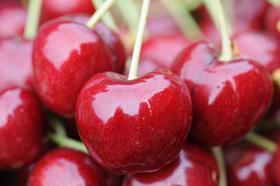
There have certainly been worse quarters for the stonefruit category.
Although shoppers are buying fewer nectarines, cherries, apricots, peaches and plums each shopping trip, the latest Kantar Worldpanel data shows that consumers are buying products from the category on a more frequent basis, and stonefruit has enjoyed a growth in value of 3.3 per cent.
It’s a good time to be in the trade, as Jo Mumford, category insight manager at fresh produce giant Chingford, explains: “Stonefruit market growth remains strong, delivering double-digit growth over the recent winter period. In turn, this boosted the top-line yearly position following sluggish growth during last summer.
“Stonefruit received much greater focus this winter with a significant 50 per cent increase in space combined with 20 per cent more promotional offers versus last year. Nectarines and peaches drove the top-line category performance – this was linked again to higher year-on-year instances of promotional activity and space.”
Market trends such as these have led to British consumers purchasing the product more frequently, and according to Mumford, almost one in three shoppers bought some kind of stonefruit product this year versus compared to roughly one in five last year.
Going forward, Chingford is buoyant about the prospects for stonefruit over the remainder of this year: “If market support remains as strong going forward, we should expect to see a much sturdier stonefruit performance this coming summer,” she says.
“So far the 2015 northern hemisphere stonefruit season seems to be on track as expected. There were some concerns pre-Christmas about a lack of cold phases due to a relatively mild winter, although a couple of cold snaps post Christmas has abated this fear.”
The majority of production is currently sitting at flowering stage with no reports of wet weather affecting pollination issues.
Europe’s early regions have their stonefruit “already half way through the double sigmoidal growth curve”, with harvest dates being suggested for mid-April, according to Mumford.
Tesco drew attention to the work it was doing last year to help create a UK apricot industry to rival that of France’s. Mumford is just as excited by the future for British-grown apricots though, and tells FPJ: “Having recently visited the orchards, we are looking forward to the peak summer season where we’ll be hoping to see a strong crop of UK apricots.
“This will provide another fantastic opportunity for the UK shopper to purchase various domestically-grown stonefruit.”
Cherries have been the biggest driver of growth in the stonefruit market over the past year, with strong frequency and penetration gains.
Paul Tomlinson, of Total Cherry, says: “The last few months have been very good. March used to be a month when there was very few cherries. We, for example, have had an excellent February and March with fruit becoming more available from the late southern hemisphere regions, and quality and price has been good.”
Tomlinson says that it has been evident over the last five years that the weather is changing, with warmer winters equating to less cherry dormancy hours. He adds that supply and demand in the cherry market have both increased, aided by “new countries from the east of Europe, with good varieties and the technology to keep integrity within the cool chain.”
Looking to the future, Tomlinson expects to see the following changes in cherries: “Extension of crops and storing techniques; Varietal developments, as varieties from around the world are now being planted in the UK; Maximising sales potential in UK retailers and export opportunities; and 100 days of British – this is the objective and a possible reality, but time is needed as new varieties are being tested all the time and they take time.” —



